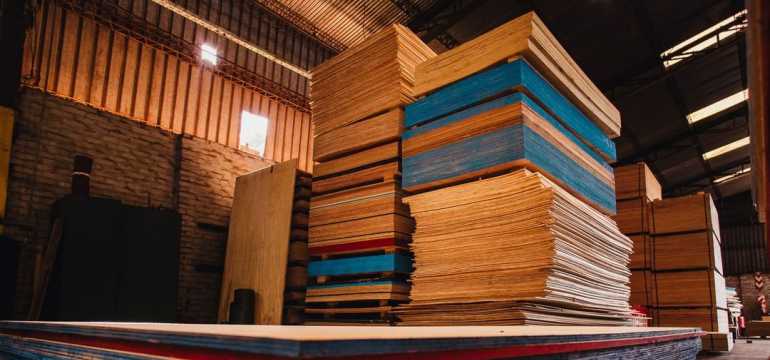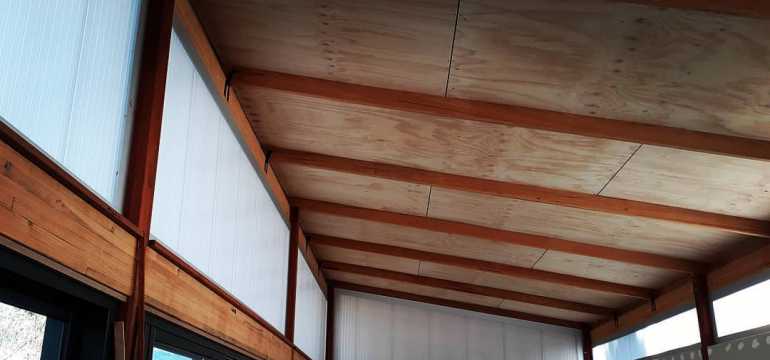Understanding the construction industry is tricky if you have never dabbled in a building before. Many people find themselves overwhelmed at the number of options they have, even in just the plywood aisle.
One of the newer forms of plywood, RTD plywood, or RTD sheathing, is becoming very popular for exterior applications. However, many people find themselves wondering how different it is from CDX plywood and other popular varieties.
If you need to choose the right sheet of plywood but feel overwhelmed, here are a few of the facts that you need to know.
How plywood is rated?

Before you can decide which type of plywood is right for your project, you need to have a basic understanding of what RTD plywood actually is. In general, plywood is rated according to the number of defects or blemishes that you will find on the surface. It is most common to find plywood labeled with three letters. The first two will range from A to D.
Sheets of plywood that are rated with an A have the fewest blemishes and are often used for finished projects like cabinets or furniture. As you move through the alphabet, you will find that each category has slightly more character than the category before it. For example, a sheet of plywood with a D rating will have many open knots and splits that are not corrected with filler.
The first letter indicates the front side of the plywood. The second letter indicates the backside of the plywood. The last letter indicates the type of adhesive that is used to bind the layers of plywood together.
Most people who are working on construction products are looking for the final letter X. This letter indicates that the plywood is designed for “exposure.” It can tolerate moisture for a short period of time, such as during the construction process. However, you may need something else if it is going to be continuously exposed to inclement weather.
What is RTD plywood?
Now that you know all of that, what is RTD plywood, and why is it different? Some people believe that RTD plywood is a new and improved version of the popular CDX variety that has been used extensively in past projects.
Unlike other types of plywood, the initials found here do not indicate the grade of the plywood. They actually stand for the phrase “Resistance Temperature Detector”. This detector is a key piece in the development of RTD plywood. It provides a reading of the temperatures during the bonding process of each layer on this sheet of plywood.
Reading the temperatures is extremely important if you want to create high-quality plywood like RTD. Because manufacturers can see the temperatures, the layers are more likely to bond together better. An improved bond eliminates some of the issues with delamination that is found among other types of plywood.
RTD or CDX plywood?
Many people want to know whether they should use RTD or CDX plywood on their upcoming projects. This can be a little difficult to answer, but most experts generally agree that RTD is the way to go.
CDX plywood is still a great piece of plywood if you are looking to build something that does not require a pristine surface. Many people like to use CDX plywood as subflooring in the construction of new homes. However, more and more contractors are turning to RTD because of its inherent benefit.
Because of the testing available on sheets of RTD plywood, it is less likely for the layers to come apart. This prevents long-term issues for contractors who don’t want callbacks from upset homeowners. However, it is important that you make sure you are getting the right kind of RTD plywood if you really want it to be effective.
What is RTD plywood used for?

There are two distinct categories of RTD plywood, so you need to pay attention when making a purchase. What is RTD plywood used for? Well, it depends on whether it is listed as Exposure 1 rated or as an Exterior rated panel.
Exposure 1 essentially means that it can be exposed to moisture, but it can’t be expected to hold up under consistent moisture forever. For example, it may withstand moisture during the construction process. It may also be a great option for subflooring because the air can travel around the plywood and keep it from becoming too wet. Exposure 1 rated plywood, mostly called “CDX” in the trade.
Exterior panels sometimes referred to as RTD sheathing, are designed to hold up to constant moisture. They are completely waterproof and are great for installing in places where you expect consistent exposure to moisture. This RTD sheathing is great for roofs and other outdoor applications.
Understand what you’re buying
RTD plywood is one of the newest and most advanced forms of plywood on the market today. Understanding what RTD plywood is and what it can be used for is extremely helpful for those who want to make a wise decision on their next building project.
It can also help you to weigh the benefits of RTD or CDX plywood, two of the most common varieties found in lumberyards. If you’re ever in doubt about whether RTD plywood is right for you, make sure to do a little research on what your project really requires.
- Painting Over Powder Coat and What You Need to Know - February 1, 2022
- How to Get Rid of Humidity in a Basement Without a Dehumidifier - December 17, 2021
- How to Fix a Crack in Drywall That Keeps Coming Back - September 22, 2021
